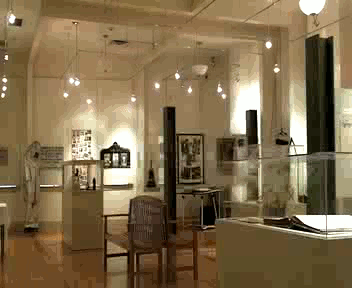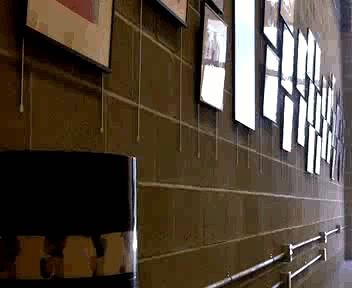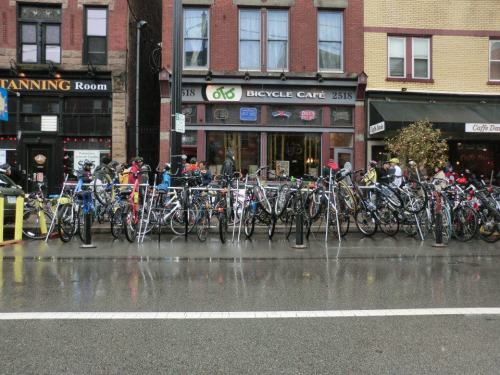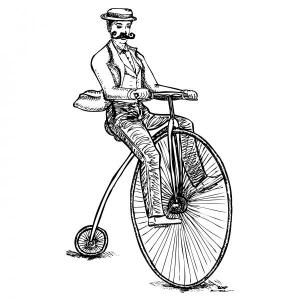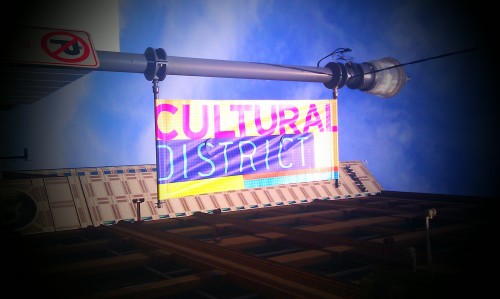
photo by Sierra Starks
By Sierra Starks
Naturally, it all began with Heinz.
In the late 1970s, H.J. “Jack” Heinz II had an extraordinary vision: to transform a then downtrodden Downtown Pittsburgh into a world-class destination for arts and entertainment.
To carry out his vision for the city’s cultural oasis, Heinz established the Pittsburgh Cultural Trust in 1984 to serve as the driving catalyst behind the creation and ongoing development of the downtown Pittsburgh Cultural District.
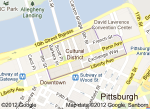
the Cultural District
Almost three decades and more than 1,000,000 sq. feet of art-affiliated property later, the Cultural District is a premier showcase of the rich and vibrant culture that is Pittsburgh. Through public and private partnerships, the Trust continues to transform this section of downtown Pittsburgh from what was once an abandoned area to a lively 14-block urban art neighborhood filled with theaters, art galleries, restaurants, hotels and an increasing number of downtown living options. Pittsburgh is now more than just “Steel City;” it competes with other arts and entertainment destinations on both a national and international scale.
Take, for example, the array of art schools in the downtown area: The Art Institute of Pittsburgh, Pittsburgh School for the Creative and Performing Arts (CAPA), and Point Park University, among others.
Point Park is a small, private, accredited, liberal arts university in downtown Pittsburgh whose Conservatory of Performing Arts is nationally ranked as one of the top programs of its kind. It is run and overseen by a world-renowned faculty including instructors, directors, producers, writers and choreographers. It is also the birthplace for the nation’s rising talent.
Point Park grad turned professional actress Ashley Archambeau got her first real taste of the Cultural District during her junior year in the performing arts program. She and a group of friends produced a novice gallery performance piece titled “Generation I” performed at the Wood Street Galleries on Penn Avenue. The piece was a reflection of the generation’s reaction to the war in Iraq.
Archambeau, who served as director, called the performance “interactive art” and noted that the audience was extremely receptive to their efforts.
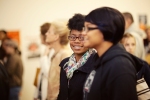
Wood Street Galleries is the gem of the Gallery Crawl, which happens three times a year in Pittsburgh's Cultural District. Photo courtesy of Pittsburgh Cultural Trust
The professionals at Point Park had encouraged her to look for opportunities in which to showcase her work. She had often passed the Wood Street Galleries on walks through downtown, where she often searched for inspiration.“The Cultural District contains so much for people who are in school for the arts,” Archambeau said, explaining that the majority of the inspiration for her pieces then came from gallery spaces, artists’ pallets, and essentially, whoever’s work was relevant in the Cultural District at the time.
She was a pioneer, who disregarded that she was the youngest person, by decades’ count, in the audience of the theatrical performances. The Cultural Trust may comprise of individuals of advanced years, but Jack Heinz II had more in mind than just the established in his vision for the Cultural District.
And apparently, so did Pulitzer Prize winning playwright and Pittsburgh Hill District native August Wilson.
According to Sheila Mckenna, chairwoman of the theater department at Point Park University, Pittsburgh has always had a variety of arts performances to attend. But in recent years, its efforts have been lining up more and more with those of individuals like Heinz and Wilson. “The Trust has increased the number of venues, broadened the scope of national and international guest artists and companies, and improved the appearance, safety and accessibility of their footprint in the downtown area.”
If we’re talking footprints, it goes without saying that the newest of the venues in the Culture District, the August Wilson Centre for African American Culture, has certainly made its mark.
Named after the famous writer, the August Wilson Centre for African American Culture dubs itself as “a place like no other for experiencing theater, dance, music, history, film, literature, visual art, interactive education and spectacular entertainment, all under one roof.”
It has also become a haven for the younger crowd: performing arts students, fine art fanatics, art-appreciative aficionados, and the like.
Kaylin Horgan, a member of the August Wilson Dance Ensemble, credits this appeal to the actual artistry of the Center.
“A lot of our talent [at the August Wilson Center] is up-and-coming,” she said, using the symphony as a contrast.
Horgan, who is both a CAPA and Point Park graduate, admits that the Cultural District was never much of a hot topic while she was in high school or college. But she, like Archambeau and a select few, looked for inspiration in a resource that was literally next door.
Be it music, dance, gallery exhibits, films, experimental theatre, opera, tours, etc., “The opportunities are there,” Horgan said. “It’s something that’s worthwhile to look into.”
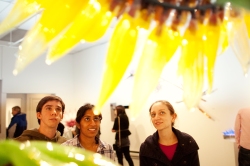
Students enjoy the Gallery Crawl, held at the Wood Street Galleries in Pittsburgh's Cultural District. Photo courtesy of the Pittsburgh Cultural Trust
Essentially, it’s about longevity. The timelessness of art and culture signify the value and importance of the Cultural District. Whether you want to be an actor/actress, ballerina, painter, sculptor, curator, or you’re just into the art for art’s sake thing, there’s a whole playground downtown for the travelling.It may have begun with Heinz, but its life lies with you.








